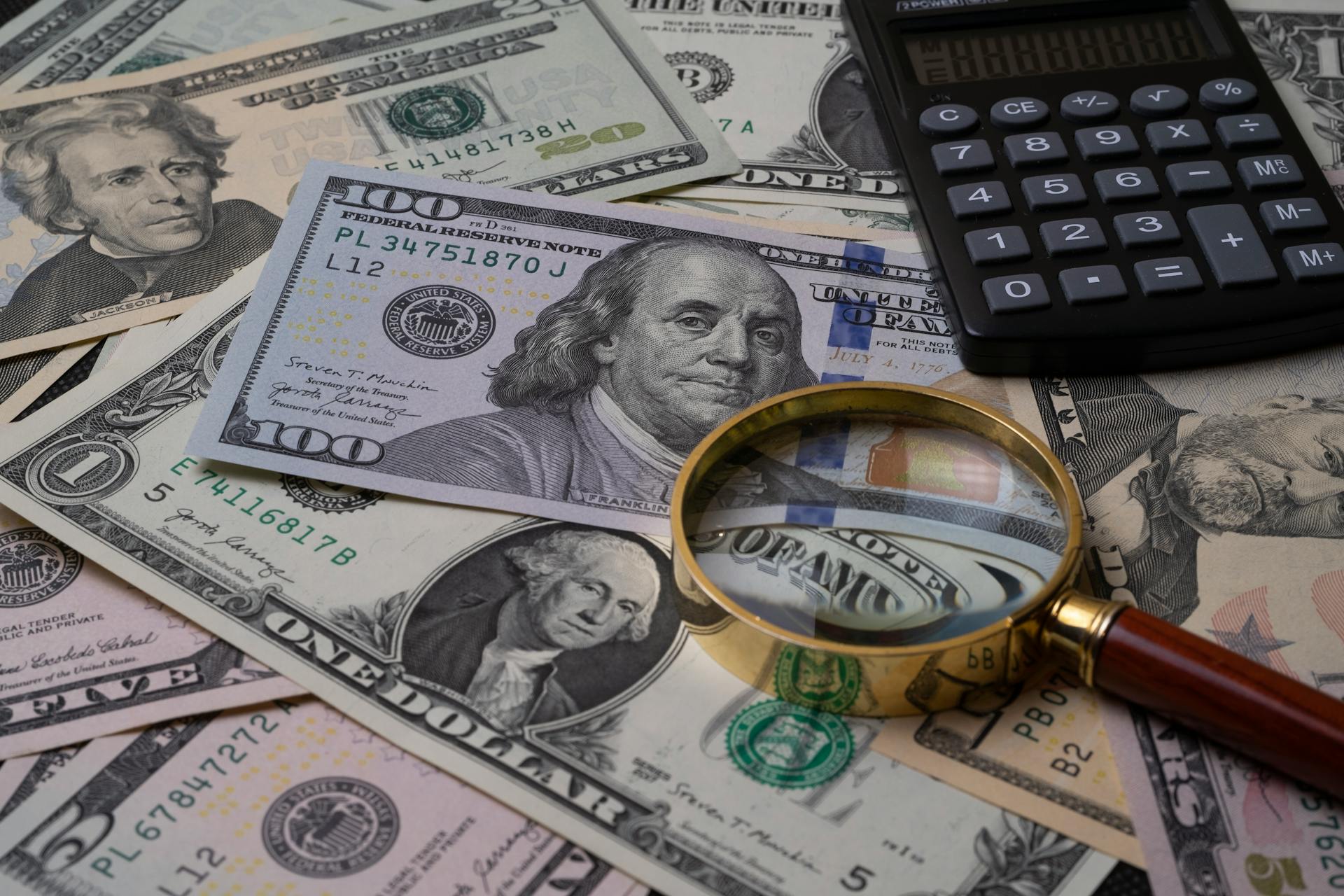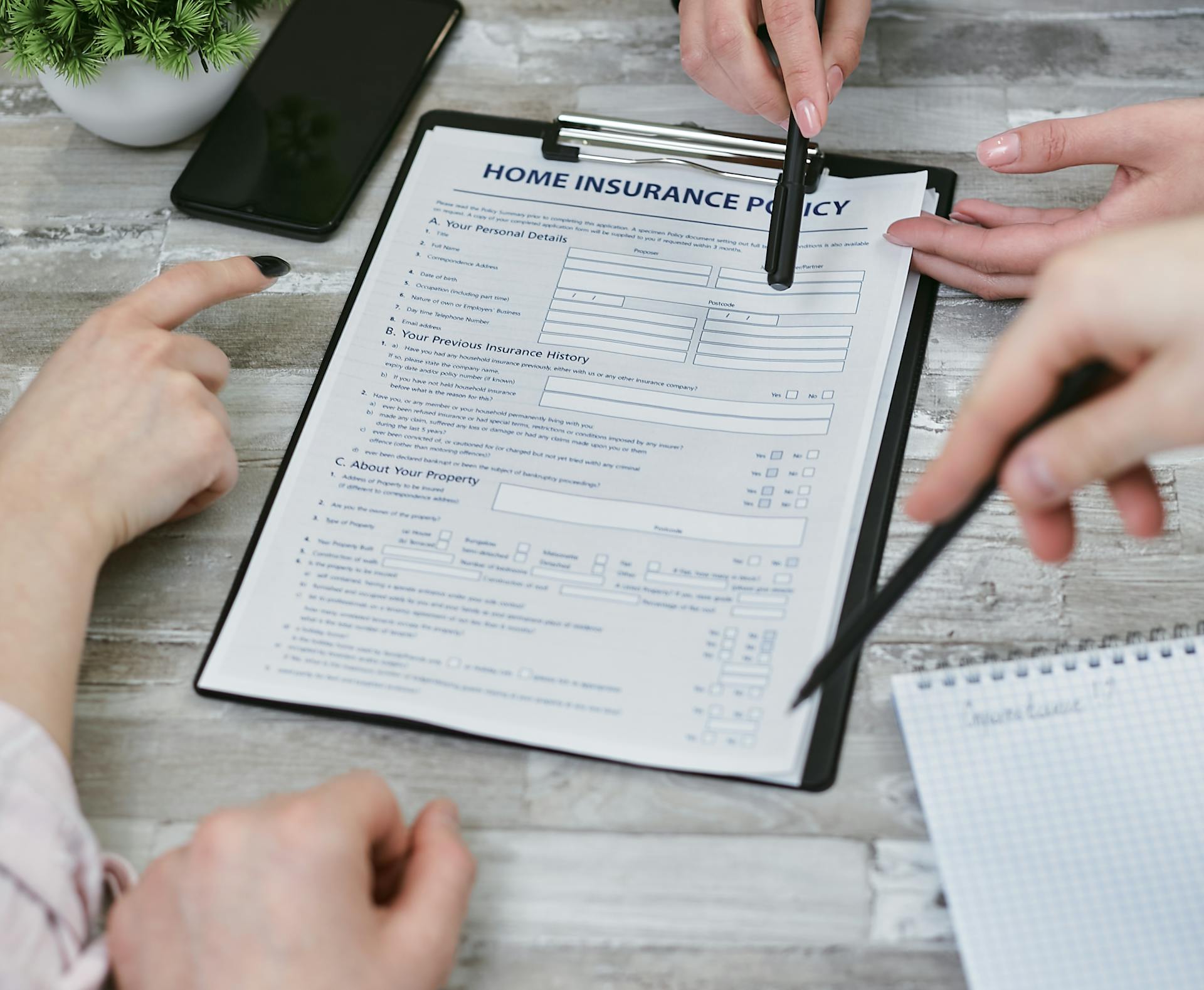
Filing a hit-and-run claim can indeed increase your insurance costs, but the extent of the hike varies depending on several factors.
If you're involved in a hit-and-run accident, you may be required to pay your deductible upfront, which can range from $500 to $1,000 or more, depending on your policy.
Making a claim for a hit-and-run accident can also lead to a rate increase, but the amount of the increase is typically not as significant as you might think, with some studies suggesting an average increase of around 10-20%.
If you're found to be partially at fault for the accident, your insurance costs may be higher due to the increased risk of future claims.
For more insights, see: Does Insurance Cover Hit-and-run Parked Car
Hit-and-Run Claims and Insurance
Filing a hit-and-run claim can be a bit tricky, but it's essential to understand how it might affect your insurance costs. Your insurance coverage for a hit-and-run accident can be categorized into two types: property damage coverages and bodily injury coverages.
For another approach, see: Will a Hit-and-run Claim Raise My Insurance California
If you file a claim for a hit-and-run accident, you might not have a deductible to pay if you have uninsured motorist coverage (UMBI). However, if you file a collision claim for damages to your vehicle, you'll have a deductible to pay.
Whether or not you should file a claim for a hit-and-run accident depends on the circumstances and your coverages. If you live in a state that offers Personal Injury Protection (PIP), you might have a deductible, but your personal injury medical costs may well exceed your deductible.
In some cases, a hit-and-run accident might not raise your insurance cost if you weren't at fault. However, in other cases, any accident can result in a rate increase, even if the other driver was clearly at fault.
You might like: Not at Fault Insurance Claim
Impact on Insurance Costs
A hit-and-run claim can raise your insurance costs, but not always. The impact on your premium depends on your insurer and state.
In some cases, your premium may not increase if you weren't at fault, but in other cases, any accident can result in a rate increase – even for hit-and-run accidents where the other driver was clearly at fault.
The amount of the rate increase varies depending on the company and the severity of the accident. For example, an average increase of $87 per month for full coverage is common after an accident where you're at fault.
However, if the accident wasn't your fault, your rates may still increase, but by a smaller amount. In Texas, for instance, your insurance company can raise your rates even if you weren't at fault, as it's seen as an increased risk of future accidents.
The good news is that some insurance companies only increase rates if the accident is more than 50% your fault. But proving fault can be difficult, and some companies may raise rates in certain situations, even if you're not the at-fault driver.
Here's a rough estimate of how long an accident can affect your insurance rates:
- 3-5 years: The accident will usually affect your insurance rates for this period.
- 2 years: Your rates will be about 47% higher than normal.
- 4 years: Your rates will be only 2% higher than normal.
Keep in mind that these are general estimates, and the actual impact on your premium will depend on your insurance company and state.
Insurance Coverage and Options
Insurance coverage and options can be complex, but we'll break it down simply. Insurance coverage for hit-and-run accidents can be categorized into two types: property damage coverages and bodily injury coverages.
Collision coverage protects you against any physical damage to your car that was caused by impact with another vehicle or a stationary object, regardless of fault. If your vehicle is damaged in a hit-and-run, collision will help cover the cost to repair or replace it after paying your deductible.
Uninsured motorist property damage (UMPD) coverage is a good option if you don't carry collision coverage. In most states, a driver who flees the scene of an accident will be considered "uninsured" by your insurance company, making UMPD coverage a must-have for damage to your car caused by a hit-and-run incident.
UMPD coverage typically has a deductible you'll need to pay out of pocket. Consider adding UMPD coverage to your policy, as it's relatively inexpensive and mandated in some states.
Avoiding Rate Increases
If you're involved in a hit-and-run accident, your insurance rates might not increase if you file a police report within 24 hours. This is according to State Farm, which considers this a valid circumstance for avoiding rate hikes.
Some insurance companies only increase rates if they consider the accident to be more than half your fault. However, proving fault in an accident can be difficult.
If you were lawfully parked and your car was damaged in a hit-and-run, your premiums shouldn't increase. This is one of the circumstances where your auto insurance costs should not increase after a car accident.
If the other driver involved in the crash was convicted of a moving traffic violation, but you were not, your premiums also shouldn't increase. This is another situation where your insurance rates should remain the same.
You might be able to avoid rate increases if you have accident forgiveness. This typically means your first accident won't cause your rates to go up, but you could still see an increase if you had a safe driver or claim-free discount prior to your accident.
A unique perspective: Does Hail Damage Claim Raise Home Insurance Rates
Here are some circumstances where your auto insurance costs should not increase after a car accident:
- Lawfully parked and hit by another vehicle
- Hit-and-run accident with a police report filed within 24 hours
- Other driver was convicted of a moving traffic violation
- Accident or damage caused by an animal, falling object, or flying gravel
How Premiums Are Calculated
Insurance companies consider many factors when calculating your premiums. They look at your personal risk factors, such as your age, the type of vehicle you drive, and where you live.
Your driving record and claims history are also taken into account. The better your record, the lower your premium, but traffic violations and previous claims will increase your rate.
Urban areas carry more risk, from vandalism to theft and other crimes, so drivers in larger cities tend to pay more than those in rural areas or smaller towns.
Insurance companies also consider your occupation and the cost to replace the car you drive. The type of car you drive can make it a target for theft, vandalism, etc., and the more expensive the car, the more it costs to insure.
Here are some key factors that can impact your premiums:
- Your driving record and claims history
- Where you live and how much you drive
- Gender and marital status
- Your occupation
- The cost to replace the car you drive
- Your credit score
Two factors an insurance company cannot consider are your religion and race.
Proving Fault and Insurance
If you're worried about a hit-and-run claim raising your insurance rates, you're not alone. A police report can be a powerful tool in proving the other driver's liability.
To prove fault in a hit-and-run case, you'll need evidence. Eyewitness statements from non-family members can be particularly helpful in establishing the other driver's fault.
A police report citing the other driver for a traffic infraction or eyewitness statements can go a long way in proving fault. Crash experts can also provide testimony on how the crash occurred, which can be used to support your claim.
Photographs and video footage can also paint a picture of the other driver's fault. The other driver's signed admission of guilt under oath is the most direct evidence of fault.
Here are some types of evidence that can help prove the other driver's liability:
- A police report citing the other driver for a traffic infraction.
- Eyewitness statements (from non-family members) saying the other driver was in the wrong.
- Testimony from crash experts, such as reconstructionists, on how the crash occurred.
- Photographs and video footage painting the other driver as the at-fault party.
- The other driver’s signed admission of guilt under oath.
Insurance Companies and Quotes
Insurance companies will likely raise your rates after a hit-and-run claim, as they believe you're more likely to make a future claim. This is why insurance companies increase rates by at least 61% on average, as seen with Geico, Nationwide, and AAA.
Check this out: Does Hail Damage Claim Raise Car Insurance Rates in Texas
State Farm is an exception, with a rate increase of only around 15% after an at-fault accident. Erie is also a good option, with a rate increase of around 15% and full coverage costing $151 per month after an at-fault accident.
Some insurance companies are more lenient with rate increases than others. For example, Erie only increases rates by around 15% after an accident, making it a good option for those who have been involved in a hit-and-run.
You might enjoy: Will Car Insurance Cover Repairs If You Are at Fault
Monthly Full Coverage Quotes
Monthly full coverage quotes can vary significantly depending on your driving history. If you've been involved in an accident, you can expect to pay more for car insurance.
Drivers who have caused a crash pay more for car insurance, with some quotes increasing by as much as 60% in just six months. For example, a driver who has been involved in a crash six months ago may pay $84 per month for full coverage.
Here's an interesting read: Insurance Carrier Will Pick of Coverage If a Claim Is
The good news is that the longer you go without making a claim, the lower your quotes will be. After one year, a driver who has been involved in a crash may pay $80 per month for full coverage, a decrease of 4% from the six-month mark.
Here's a rough idea of what you might expect to pay for full coverage quotes based on your driving history:
Keep in mind that these are just rough estimates, and your actual quotes may vary depending on your specific circumstances.
Best Car Insurance Companies
State Farm is a reliable option for car insurance after an accident, with an average monthly cost of $154 for full coverage. This is a relatively small increase of around 15% after a crash.
Erie is a standout midsize insurance company that keeps rates low after an accident, with a monthly cost of $151 for full coverage. However, keep in mind that Erie is only available in 12 states and Washington, D.C.
Geico, Nationwide, and AAA are not the best options if you've been in an accident, as they raise rates by at least 61% on average.
Expand your knowledge: State Farm Insurance Accident Claim
Best Cheap Auto
If you've been in an accident, finding affordable auto insurance can be a challenge. You can find cheap auto insurance quotes after an accident by comparing rates from multiple insurance companies.
Shopping around is key to getting the best deal, as rates can vary significantly between providers. Some insurance companies specialize in insuring high-risk drivers, which may make them a better option for those with a history of accidents.
Your driving record plays a significant role in determining your insurance rates, so it's essential to keep your record clean. If you've been in an accident, you can expect your rates to increase, but shopping around can help you find the best possible deal.
Comparing quotes from at least three insurance companies can help you save money on your auto insurance premiums.
If this caught your attention, see: Help Insurance Claim
Frequently Asked Questions
Will insurance go up if I file a claim?
Filing an insurance claim may temporarily increase your insurance rate for 3-5 years. This increase is usually short-term, but it's essential to review your policy and understand the potential impact on your premiums.
Is there a deductible for hit and run in Maryland?
In Maryland, a $250 deductible applies to claims filed under your own uninsured motorist policy for hit and run incidents. You may need to file a claim under your own policy if the other driver leaves no information.
Sources
- https://www.progressive.com/answers/hit-and-run-insurance/
- https://www.valuepenguin.com/how-does-accident-affect-my-car-insurance-rates
- https://www.dickersonoxton.com/blog/insurance-rate-go-up-if-involved-in-auto-accident-not-at-fault/
- https://onmyside.com/faqs/will-my-car-insurance-premiums-go-up-after-a-collision-that-i-did-not-cause/
- https://www.herberttrial.com/do-my-insurance-rates-rise-if-the-car-accident-wasnt-my-fault/
Featured Images: pexels.com


